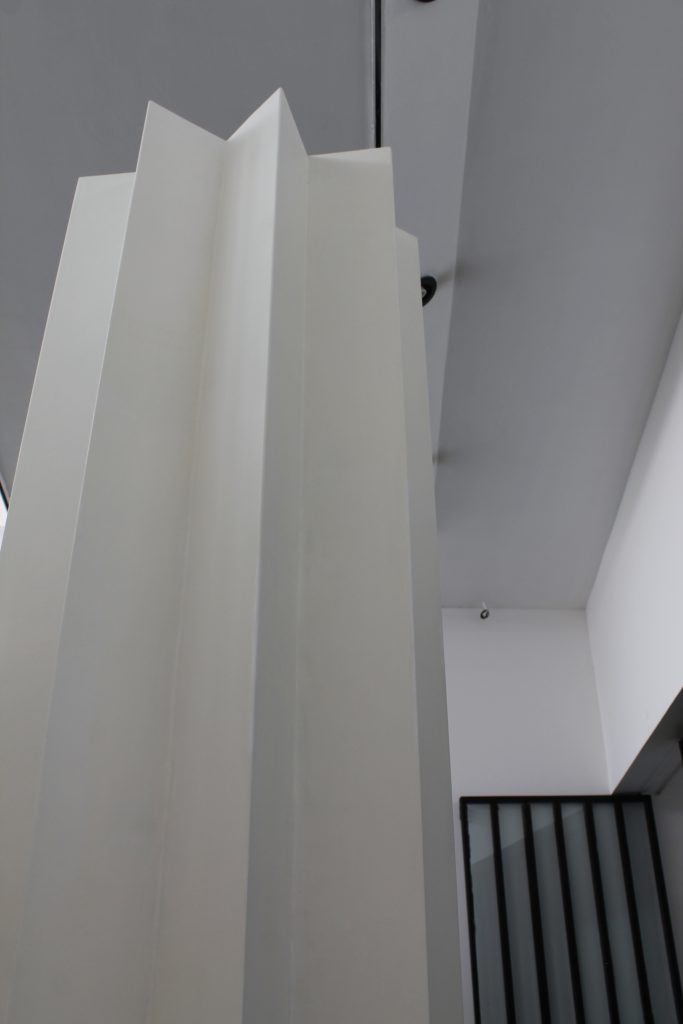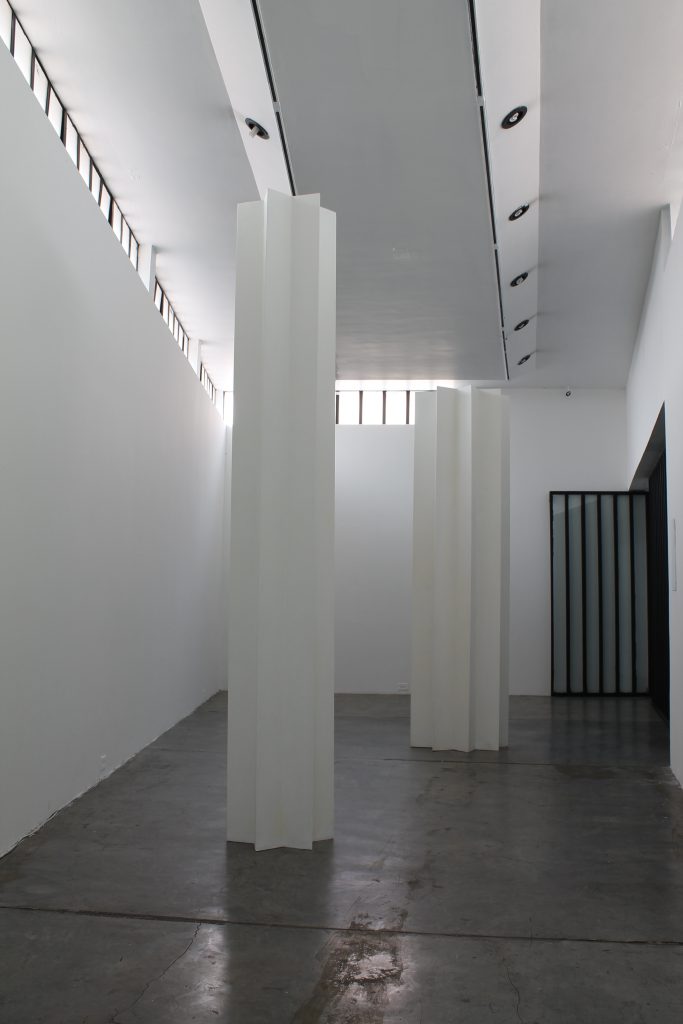Looking at the sky is a relatively simple action that could also be interpreted as a natural act of reflection on our very existence, and on our limited human scale in comparison with the scale of the natural universe. It is a constant that puts the scientific and religious worlds in parallel alignment by enabling us to distance ourselves and assume a state of otherness with respect to our own physical presence. Since ancient times, gazing at the sky as a way of perceiving the universe has been translated into architectural orders and systems. These have in turn resulted in forms we now recognize as obelisks, columns, towers and observatories, which throughout history have sought to explain our presence on earth as we contemplate the heavens.

As part of his creative journey, Mathias Goeritz (Poland, 1915) considered the relationship between man and the cosmos as a compendium of symbols in which modern architecture could intervene on a spatial level, thus making a contribution to the field of sculpture in the second half of the 20th century in Mexico. This enabled a reinterpretation of his practice as a unique language within the artistic milieu of the time through the creation of a dialogue with the worlds of architecture and poetry. The result was a broader model of production which enabled him to explore different platforms of production and creative exchange with different authors, contributing to the versatility of his artistic endeavors and his work as a historian, curator, promoter, teacher, poet and artist.
Variaciones para Ursa is an exhibition that presents an installation with two sculptures by Goeritz in the Daniel Mont gallery of El Eco in a way that, combined with the emotional architecture of the venue, conveys a new configuration of the space and interpretation of its elements. At the same time, it is evocative of other projects that Goeritz worked on throughout his life in which he used architecture as a compositional element, and is based on the preoccupations of his work and not just as a container for it.
The pair of fluted columns entitled Torres, variaciones para la Osa Mayor (Towers, variations for the Ursa Major) have as their base form the projection of two stellar bodies and were among the urban sculptural works that Goeritz designed as part of the Ruta de la Amistad (Friendship route) project commissioned for the 1968 Summer Olympic Games. The Ursa Major constellation is said to be one of most visible star clusters in the northern hemisphere and an important part of Western cosmic mysticism’s attempt to create a poetic mapping of the universe. Perhaps this is why one of the recurring themes in the work of Goeritz is the desire to make all of us who participate in his artistic events to, at least for an instant and in the natural and ideological sense, go back to believing in the vastness of that of which we are a small part.

This work by Mathias Goeritz can be considered part of what he defined as Oración Plástica (Plastic Prayer). And on this occasion, being linked for the first time with the architecture of El Eco, it appears as yet another mystery to be found along his emotional journey.
David Miranda, curator
Top image: David Miranda, Chicles en el pavimento estelar (Chewing gum on the stellar pavement), 2015.